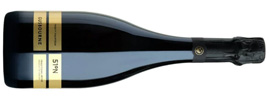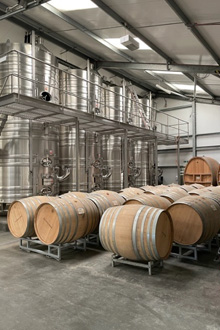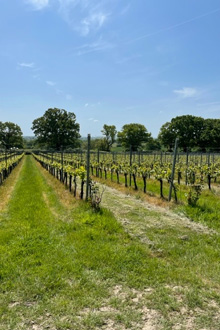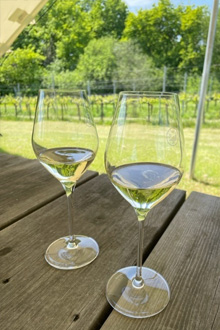An English Wine tour like no other

Thanks to the charity of the Pig at Bridge Place, Gusbourne and Simpsons Wine Estate, as part of a prize for a charity auction, I have had a fabulous tour of some premium English wines. The day began with arrival at The Pig at Bridge Place, a 17th century building filled with period furniture, somewhat gothic architecture and an enticing cellar (definitely one to visit for a weekend getaway). We met the sommelier who beetled us off in a very rustic Land Rover Defender, on a baking May day, just bringing that real countryside feel out.
Gusbourne Estate
Our first port of call was the highly regarded Gusbourne Estate, who are famous for having England’s most expensive wine, the 51 Degrees North. We were immediately greeted by Chief Winemaker Charlie Holland who whisked us away to the inner workings of the winery. A quick inspection of the two large presses, including going underneath it to stare up inside, was followed by inspecting all the smaller tanks that were named by vineyard plots. These were the as yet “un-sparkling” wines, not yet fully vinified, fined or filtered. These are the beginnings of sparkling wine, which are tasted plot by plot, and then blended to achieve the perfect flavour. And yes, we did get to try some. The Chardonnay plots from chalkier soils were very acidic and zesty, with a very earthy feel about them. The clay soil plots were distinctly more robust but still clearly very acidic as expected from the unfinished wine. You could really see how tasting at this stage was key to the building blocks of the wine.
After this amazing insight into the winemakers thought process, we were given a whizz around the barrel room and fermentation tanks, a peek into the lab at some of the high-tech analysis machines and I even spotted an amphora that had been shipped in for some more experimental winemaking.
There are interesting questions about how it might taste in many more decades’ time as English wine is still very young in comparison to Champagne. I suspect the result will be very promising.

We then toured through the vineyards (of the single vineyard wines we would be tasting), basking in the sunlight, discussing the history of the area as well as vine growing from the type of trellising and pruning to grassing between every other row of vines to introduce some competition to the vines. This was fascinating to me, a WSET Diploma student who was eagerly absorbing as much as I could before my exam, but then Charlie took us to an open-air tent where the tasting was awaiting and that quickly caught my attention. Five wines were on the cards, leading up to the 51 Degrees North. Starting with two single vineyard Blanc de Blancs (Commanders and Boot Hill) and two Blanc de Noirs (Boot Hill and Down Field), the aim was to individually taste how each different terroir affected these wines to lead us to their culmination in the 51 Degrees North. Of these single vineyards, the firm favourite was the robust, yet extremely elegant Commanders Blanc de Blancs.
Of course, the highlight was 51 Degrees North, the 2014 vintage. It is so named for being at 51 degrees latitude, contributing to its serious expression of place. A very new wine to the scene, the 2014 is the first release for this wine, and we are waiting on the 2016 to come out (which we were given an early sneak peek of too!). So, how is it made? As Gusbourne put it “the best fruit from the best parcels of the best vineyards. The purest pressings. The most characterful barrels.  That was our start point.” It is majority Chardonnay, with Pinot Noir blend and spends over 6 years ageing on its lees, lending great depth of flavour and complexity. It is full of sublime citrus flavours, rich notes of stone and orchard fruits all harmoniously balanced by acidity and low sugar. We tried it with 9 years behind it, but there are interesting questions about how it might taste in many more decades’ time as English wine is still very young in comparison to Champagne. I suspect the result will be very promising.
That was our start point.” It is majority Chardonnay, with Pinot Noir blend and spends over 6 years ageing on its lees, lending great depth of flavour and complexity. It is full of sublime citrus flavours, rich notes of stone and orchard fruits all harmoniously balanced by acidity and low sugar. We tried it with 9 years behind it, but there are interesting questions about how it might taste in many more decades’ time as English wine is still very young in comparison to Champagne. I suspect the result will be very promising.
After this truly amazing tour, the next port of call was Simpsons Wine Estate… Read Here


